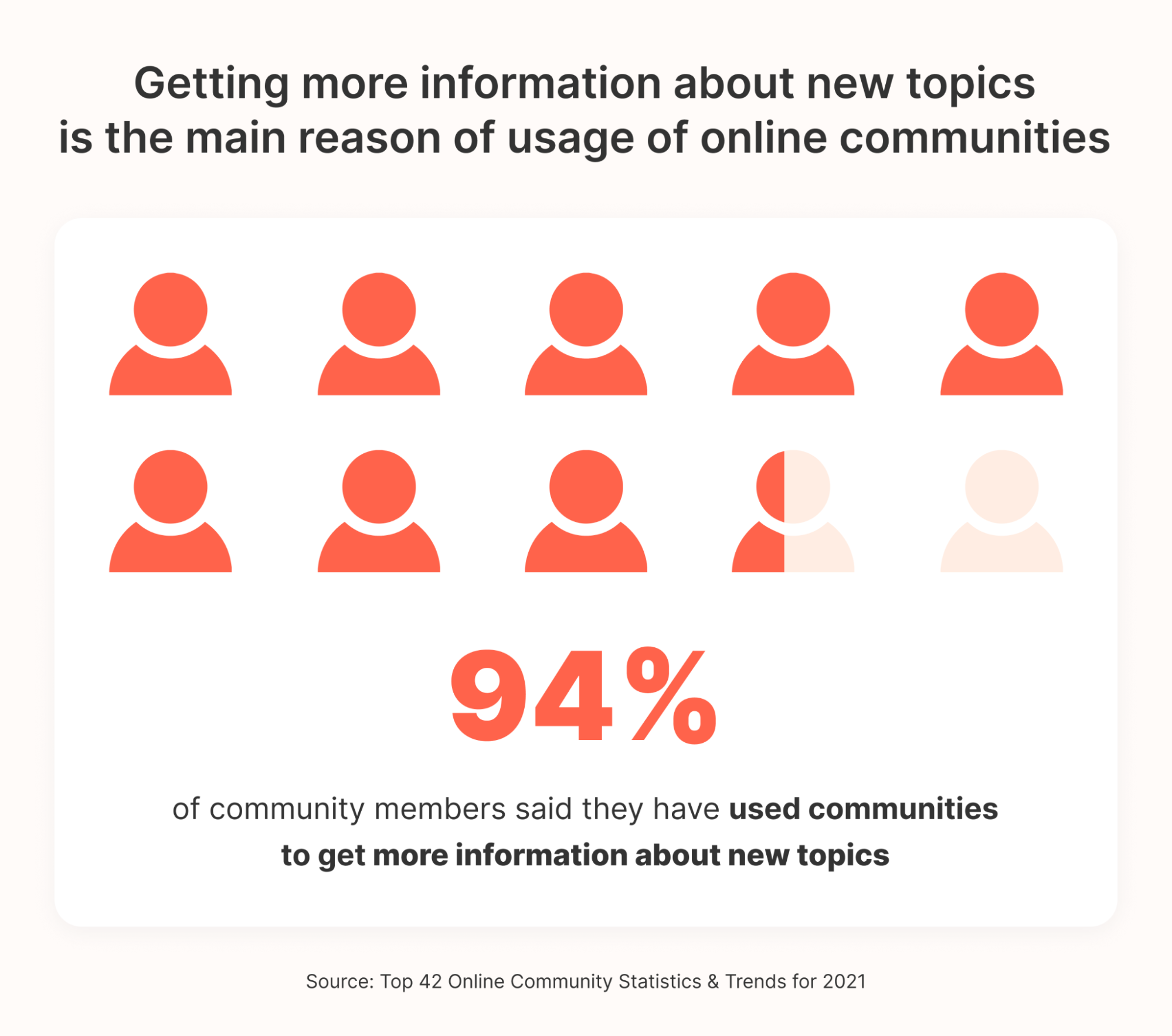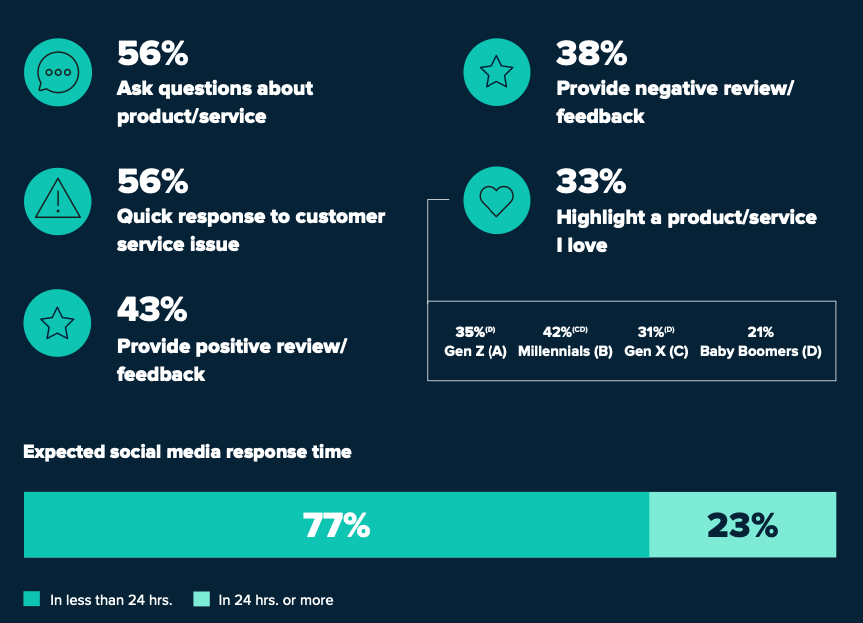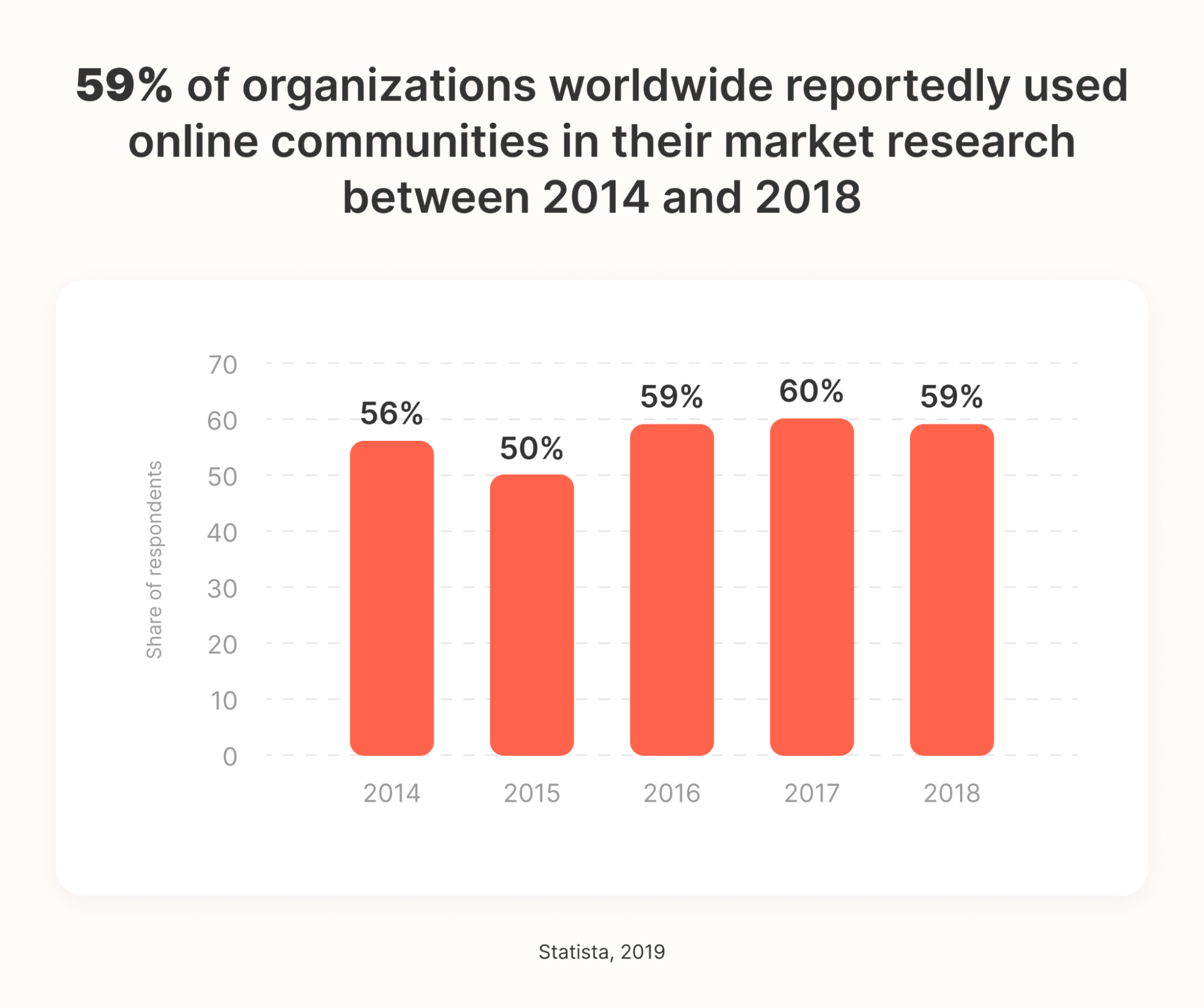KPIs (key performance indicators) are an integral aspect of measuring the success of any business objective. From evaluating how effective a business phone is for small businesses, to monitoring the success of a social media campaign, KPIs provide businesses with the metrics for measuring exactly what they’ve achieved from point A to point B within a given time frame.
For example, a KPI for monitoring the success of an influencer engagement program could be the number of conversions you get from the beginning to the end of the campaign. You can set annual or quarterly goals for your business and then use weekly KPIs to track progress made towards achieving those goals.
Digital marketers are increasingly leveraging the growth of online communities to boost brand awareness. While online communities are a great marketing tool for businesses, you need KPIs to measure their efficacy and get maximum value from them. But before we get into KPIs, let’s find out what online communities are and their use for business growth.

Image Source: Peerboard
What Is an Online Community?
In a nutshell, an online community is a platform created by a business where online users – often existing customers – can discuss and analyze your brand with other customers. They can ask questions, post reviews, and have discussions about products and services offered by the brand. Online communities can be created on popular social media platforms like Facebook or on the business’s private community platform.
What Is the Purpose of an Online Community?
The main purpose of an online community is to boost customer engagement and increase brand awareness. It’s the closest thing to having your personal fan club! Online communities can also facilitate customers to “self-serve” by allowing them to find answers to queries without having to contact customer support. This saves time and resources for a business.
Online communities are a great platform for conducting market research and developing new products. This is because you can get access to customer feedback as well as some great new ideas.
Ultimately, online communities build brand loyalty. Loyal customers become spokespersons for your brand and actively promote it to new customers. This is why it’s important to manage your online community effectively. Setting the right KPIs helps you monitor the consistent growth of your online community and optimize its value.
Community Management KPIs to Ensure Consistent Growth
Before you start setting KPIs for your community management, ask yourself what your long-term goals are and then determine the metrics you need to measure your progress. For example, if your objective is to increase the retention rate for your virtual phone system business, you should first review how you presently measure retention rates and then set new KPIs.
Here are nine community management KPIs to monitor the growth of your online community:
1. Number of Unique Logins
It’s important while studying online community metrics to distinguish between total logins and the number of unique logins. The former represents the total number of times members logged into your community platform. However, unique login shows the different people who log in at various times.
This metric shows you which users log in just a few times a month and which users log in daily. This is a useful insight that helps you tweak your content strategy to attract and encourage members to continue engaging with your brand.

Image Source: Sproutsocial
2. Identify Different Types of Members
Every online community has a mix of different types of members who log in. Some creators actively create new content that drives engagement from other users. For example, a member that uses hosted VoIP phone systems writes a post on your community platform about how businesses can increase their number of callers connected.
This post prompts another category of members – contributors – who actively comment on this post. Another category consumes the content shared in the community but doesn’t necessarily comment or actively engage in the community. These are the consumers. Finally, there are inactive members who haven’t had any engagement for a year.
Tracking the numbers of each of these types of members provides valuable insights into the kind of content receiving maximum traction. So you can review and redesign your content strategy accordingly.
3. Costs per Lead and Total Lead Generation
One of the most important metrics to consider for tracking the success of your online community is the total number of leads generated. This KPI is a direct measure of how effective your community management program has been. In addition to lead generation, another significant KPI is your cost per lead.
Cost per lead is your expenditure towards a particular initiative and the number of leads generated from it. It’s important to note that your cost per lead could be different across different platforms, particularly the different social media channels.
For example, the cost of leads generated from the community forum on Facebook could cost more than your leads from LinkedIn.
4. Number of New Members
It’s evident that to grow your online community, you need to get new members to sign up. Tracking the number of new sign-ups you get each month is a good KPI to track how much your community is growing and at what rate. It’s common for businesses to experience a spike in new sign-ups in the early days. However, these figures go down with time.
Still, if you notice a significant decrease in new member sign-ups, you need to optimize your formstack workflow integration tactics and work on new ways to grow and engage your community.

Image Source: Peerboard
5. Web Traffic From Your Community
One of the underlying aims of an online community is to drive traffic to your business website. If you notice a rise in your web traffic following a particular engagement initiative in your online community, you’ll know that the program was successful.
To find out how many of your website visitors have been prompted from your social media page, like Facebook, access your Google Analytics account. Just go to Acquisition> All Traffic> Channels.
6. Volume of Engagement
Tracking engagement metrics in your online community provides valuable insights into how community members respond to your content. The number of comments on a post, number of reshares, and retweets are different types of engagement metrics.
Comments are an especially important metric for measuring engagement. They represent active engagement from community members confirming their interest in your brand. Positive and negative comments are feedback forms that provide fresh perspectives that you can use to improve your product or service.
For example, on a post about the efficacy of your company’s customer service flow, a community user may comment on their issues being stuck in a call queue. This pinpoints the issue so you can forward it to the relevant department for immediate attention.
Community managers aim to nurture relationships with community members – boosting brand loyalty. Tracking and noting member comments and taking actionable steps to address issues shows you value their opinions.
You can track both the number of comments and their quality. The first is a more quantitative metric, while the second is more qualitative.
7. Time on Page
This is a useful community management KPI that tracks how much time members spend on your platform. The longer a member spends reading your posts and discussions, the more likely they think positively of your brand. For example, you can track a member’s activity in your community to find that they have spent time reading multiple posts and discussions using chatbots.
However, this metric can only be tracked on a company’s own community platform. It’s very difficult to measure this on conventional social media platfor

Image Source: Advergize
8. Share of Voice
This is an interesting metric that shows how your brand is positioned online compared to related businesses in the industry. Share of voice showcases your online community’s relevance and importance in the overall online engagement surrounding your specific product or service.
For example, you’re a web development company that builds mobile app deployment for brands. The share of voice metric shows you how your online community engagement around mobile apps fares next to your competitors.
9. Lead Conversion Rates
The ultimate goal of lead generation is to convert some of those leads. One of the key KPIs for online community management is to track the number of conversions that have happened via the community platform. Some platforms will likely have better conversion rates than others.
For example, a company’s dedicated community platform may lead to more conversions on third-party social media channels than in their communities.
To Sum Up
In this article, we looked at nine community management KPIs to ensure the consistent growth of your online community. The list is not exhaustive but provides a blueprint for tracking the efficacy of your community engagement program. Online communities are a favored tool of digital marketers who use them to boost brand awareness and customer loyalty.
Better engagement reduces website bounce rate and ultimately leads to increased conversions.



